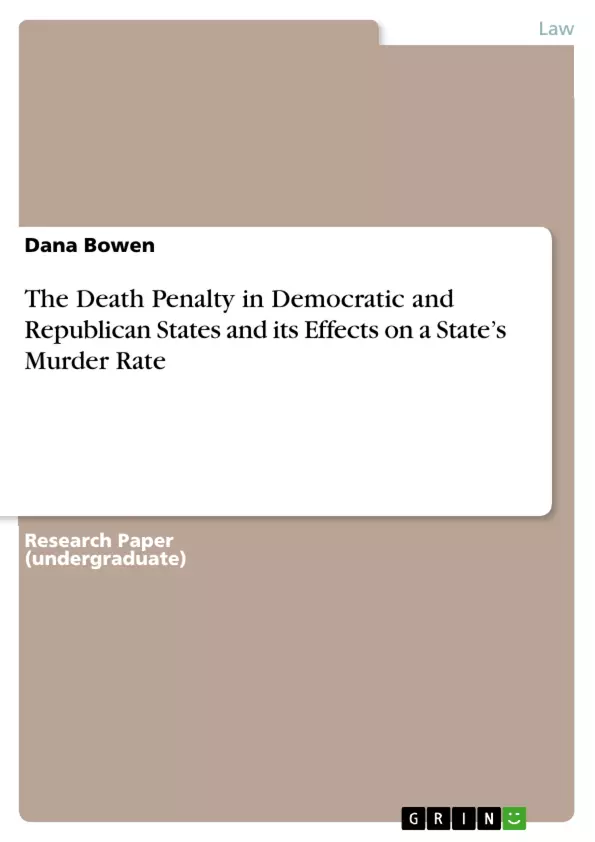This is an investigation into the death penalty and how it is applied across political lines in America. With a focus on the differences in Democratic run states and Republican run states. The death penalty and its effects on a state’s murder rate have long been a point of controversy. It has been debated whether the death penalty is a deterrent to crime. There is an ongoing need to understand the deterrence effect of the death penalty, in order to understand how to properly lower the murder rates in a given area. Further, in order to understand if the death penalty is applied in a given state , it is important to look at the political orientation of a particular state. Political orientation can have a strong affect on the punishment type chosen by a particular state.
This study seeks to clarify the debate by looking at the statistical facts, and formulating hypothesis. (1) the death penalty is a deterrent for the crime of murder. (2) Conservative states are more likely to employ the death penalty. Null hypothesis, (1) the death penalty has no effect on the murder rate. (2) political leanings of a state do not determine if they have the death penalty.
Inhaltsverzeichnis (Table of Contents)
- Introduction
- Literature Review
- Methodology
- Results
- Relationship Between Death Penalty Legislation and Murder Rate Per 100.000 Population
- Relationship Between Color Of State And Death Penalty Legislation
- Discussion
Zielsetzung und Themenschwerpunkte (Objectives and Key Themes)
This study investigates the relationship between the death penalty and murder rates in the United States, specifically examining whether the death penalty serves as a deterrent to murder and if political orientation influences the adoption of capital punishment.
- The deterrent effect of the death penalty on murder rates.
- The influence of political orientation (conservative vs. liberal) on the adoption of the death penalty.
- The role of other factors, such as population size and geographic location, on murder rates.
- The limitations of existing research on the death penalty and deterrence.
- The importance of state-level analysis to understand the relationship between the death penalty and murder rates.
Zusammenfassung der Kapitel (Chapter Summaries)
- Introduction: Introduces the ongoing debate surrounding the death penalty's deterrent effect and its relation to political leanings in various states. Outlines the study's aim to investigate these relationships through statistical analysis.
- Literature Review: Critiques existing research on the death penalty and its impact on murder rates, highlighting methodological flaws and biases in previous studies. Discusses the limitations of broad national-level analyses and the need for state-by-state investigations.
- Methodology: Describes the data collection methods used to gather information on murder rates, death penalty legislation, and political affiliation of states. Explains the statistical tests employed to analyze the relationships between these variables.
- Results: Presents the findings of the statistical analyses. The results show no significant relationship between the death penalty and murder rates but a significant relationship between political affiliation and the adoption of the death penalty.
Schlüsselwörter (Keywords)
The study focuses on the key concepts of death penalty, murder rate, deterrence, political orientation, conservative states, liberal states, statistical analysis, t-test, chi-square, state-level analysis, and empirical data.
- Citation du texte
- Dana Bowen (Auteur), 2015, The Death Penalty in Democratic and Republican States and its Effects on a State’s Murder Rate, Munich, GRIN Verlag, https://www.grin.com/document/926020



